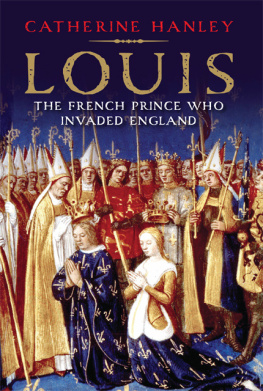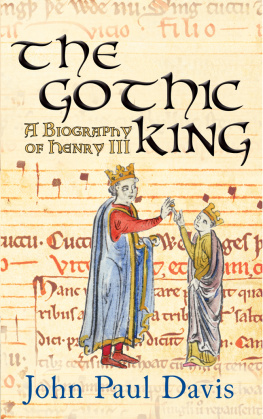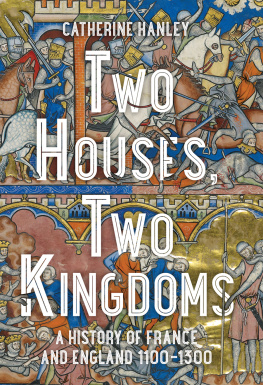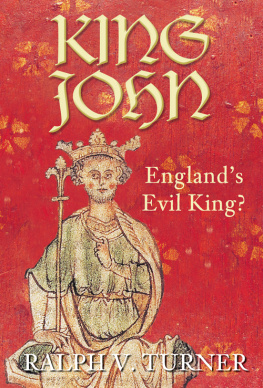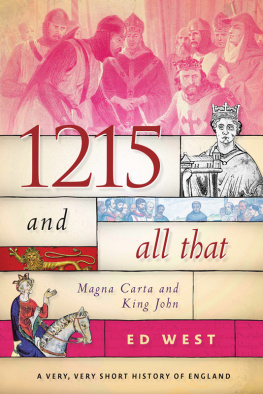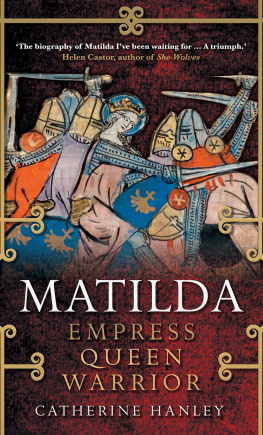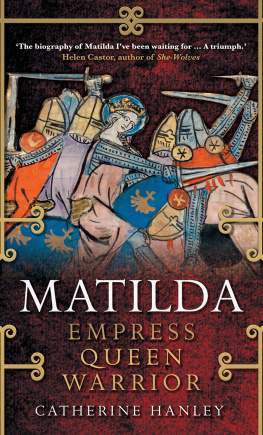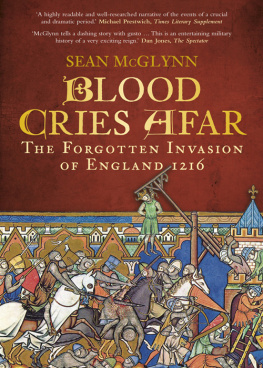

For Edwin, Charlotte and Adela
Copyright 2016 Catherine Hanley
All rights reserved. This book may not be reproduced in whole or in part, in any form (beyond that copying permitted by Sections 107 and 108 of the U.S. Copyright Law and except by reviewers for the public press) without written permission from the publishers.
For information about this and other Yale University Press publications, please contact:
U.S. office:
Europe Office:
Typeset in Adobe Caslon Pro by IDSUK (DataConnection) Ltd
Printed in Great Britain by TJ International Ltd, Padstow, Cornwall
Library of Congress Control Number: 2016932441
ISBN 978-0-300-21745-2
A catalogue record for this book is available from the British Library.
10 9 8 7 6 5 4 3 2 1

CONTENTS

ILLUSTRATIONS
Plates
Maps
Tables

ACKNOWLEDGEMENTS
I am delighted to acknowledge and to express my gratitude to the Authors Foundation of the Society of Authors for awarding the grant that enabled me to buy a significant period of time in which to collate, finish and edit the manuscript of Louis.
Both Heather McCallum at Yale University Press and my agent, Kate Hordern, saw the potential in a story from a period of history that others might consider unfashionable, for which I remain very grateful; this book would never have seen the light of day without them. Rachael Lonsdale at Yale has been a tower of strength throughout the publication process, and copy-editor Ann Bones meticulous attention to detail was much appreciated.
I owe a great debt of gratitude to my friend and colleague Sean McGlynn, who also writes about this period of English and French history. When I first mentioned to him that I wanted to write a biography of Louis he could have become territorial, but instead he supported the idea wholeheartedly and has subsequently supplied references, sources, encouragement and enthusiasm, as well as discussing various obscure points in tea rooms up and down the country.
Many others have provided assistance in specific areas so I would like to take this opportunity to thank Susan Brock and Caroline Gibson for reading early drafts of the text and providing many useful comments on them; Andrew Buck for information and references on the crusader states; Glyn Burgess for correspondence on Eustace the Monk; Julian Harrison at the British Library for locating Louiss surviving English charter; Malcolm Mann for tracking down an elusive article I needed; Colin Middleton for discussions on (and practical demonstrations of) thirteenth-century armour and weaponry; Sarah Peverley for information and references on medieval childbirth and twins; Louise Wilkinson for correspondence on Nicola de la Haye; Sam Wilson for a discussion on siege camps; the team of the Magna Carta research project, especially Sophie Ambler, for references to some primary sources I was having difficulty in finding (not to mention making available all the fabulous information on their website); and the team at Gudelon Castle, especially Sarah Preston and Florian Renucci, for practical advice on the building and repairing of castles and for assistance with the translation of some particularly obscure Old French terms. Any errors which remain in any of these areas are of course entirely my own, and Ill be happy to defend them in single combat.
The sourcing of images for the plate section in this book was made immeasurably easier thanks to those generous and patient individuals who sent photographs, found manuscript illustrations and smoothed the permissions process: many thanks to Anne-Catherine Biedermann and Barbara Van Kets in Paris, Jackie Brown at the British Library, Elizabeth Dumas at the Parker Library, Julian Humphrys, James Mears, Beth Spacey and Sam Wilson.
My husband James has been extraordinarily patient while I have been researching and writing, and did not even mind when I replaced the photo of him on my desk with a framed picture of Louis; he has probably heard enough about the thirteenth century to last him a lifetime. And finally I would like to thank my children, who have over the past couple of years put up with me with great tolerance, and who have confused and infuriated several schoolteachers by arguing quite vociferously that there was once a king of England called Louis. This book is dedicated to them.

Map 1 England in the thirteenth century

Map 2 France in the thirteenth century

Table 1 The Capetians

Table 2 The Plantagenets

1 A nineteenth-century portrait of Louis. The artist appears to have paid close attention to contemporary descriptions of his appearance.

2 Louis, as a young boy, surrounded by the four cardinal virtues of Prudence, Justice, Temperance and Fortitude, is presented with a copy of the Karolinus by its author Giles of Paris.

3 King John (left) fights in France while Louis (right) marches on La-Roche-aux-Moines in 1214.

4 Replica mail constructed according to a thirteenth-century pattern. Each link is joined to four others, two above and two below, and rows of solid links alternate with rows of riveted links. A full set of harness made of such mail, as worn by Louis and others who could afford it, would be heavy but flexible.

5 Louis arrives in England, in an image sketched by Matthew Paris in the manuscript of his Chronica Majora.

6 Dover Castle. The stronghold was heavily fortified during the reign of Henry II, and was an imposing structure by the time of Louiss attempt to besiege it in 1216.
Next page
